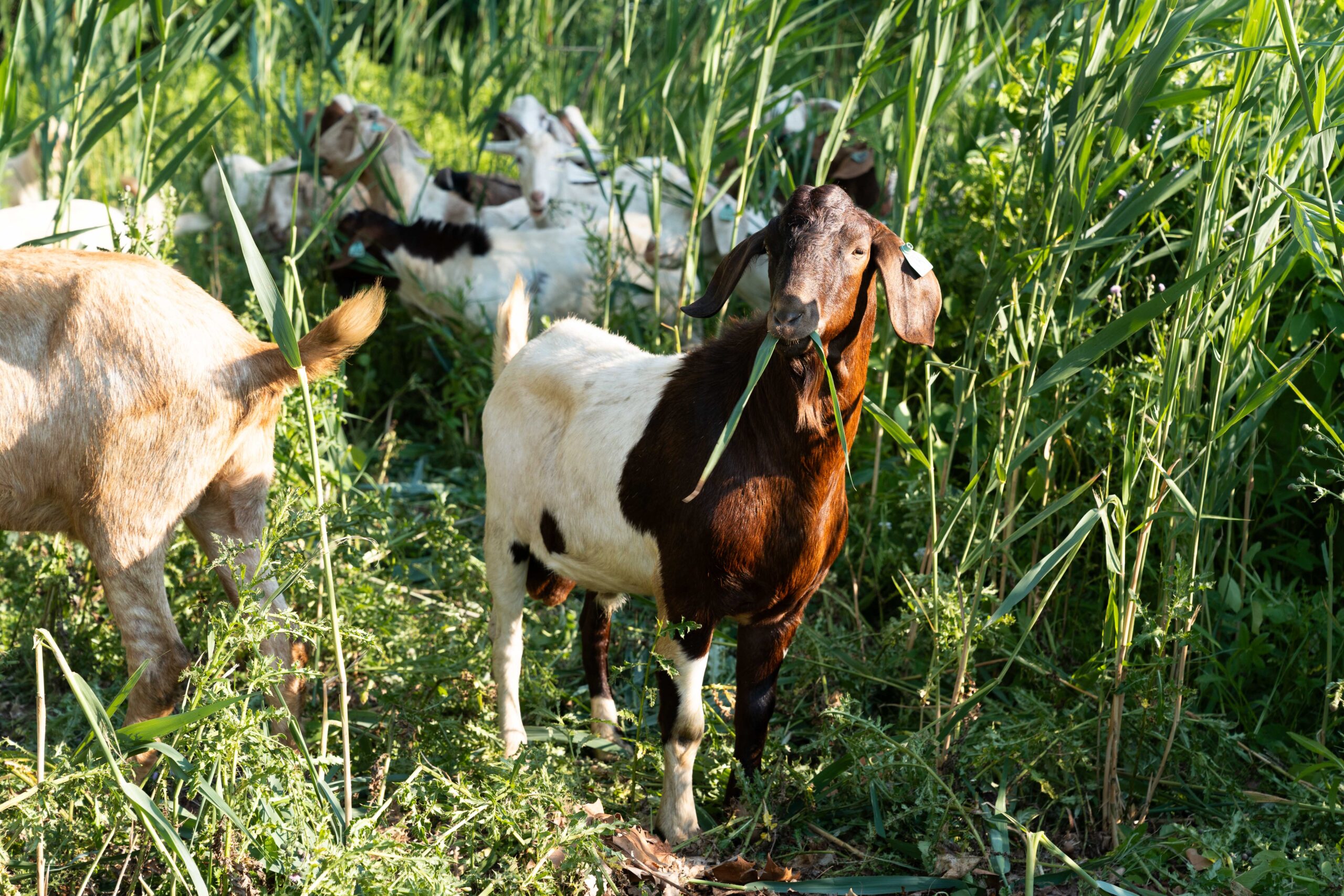Goats graze away invasive plant species at Niagara Parks: A sustainable approach to restoration
At Gonder’s Flats in Fort Erie, Ontario, goats enjoying a meal has become a greener method for managing invasive species. Niagara Parks, an independent agency of the Ontario government responsible for maintaining the Niagara River corridor, has initiated a pilot project as part of its ongoing wetland restoration efforts. This project involves using goats to graze and naturally control invasive Phragmites. The Green Grazers initiative, which began in June 2024, utilizes local goats to help manage Phragmites, one of Canada’s top widespread invasive plant species. This sustainable, chemical-free method pushes the boundaries of sustainable land management strategies in government organizations.
The Green Grazers Initiative
The Green Grazers Initiative is a weeklong pilot project that began with the efforts of two Niagara Parks employees, who imagined a more sustainable land management method. Victoria Kalenuik, Environmental Planning Technician, and Corey Burant, Manager of Lands and Stewardship, sought to tackle the invasive Phragmites problem at Gonder’s Flats while not harming its sensitive wetlands. The initiative involves sourcing local farmers to borrow their goat herds to graze on and control the overgrown Phragmites. This project will provide data about the viability of goat grazing to maintain sensitive environments and reduce the number of invasive species across its parkland to Niagara Parks.
Phragmites, a perennial reed grass, is one of Canada’s most notorious invasive species. Also known as the European Common Reed, it originates in Eurasia and thrives in northern climates and wetlands. The invasive Phragmites are categorized as restricted under the Ontario Invasive Species Act and have been known for damaging ecosystems in Ontario for decades. Between 2010 and 2017, phragmites spread by almost 30 percent in Ontario.
“The issue with an invasive species, like Phragmites, is the plant’s tall grass-like structure grows densely. The plant becomes a monoculture, shading out the ability for native wetland plants to grow. It releases toxins from its roots into the soil to stop the growth of and kill surrounding plants,” Niagara Parks Environmental Planning Technician Victoria Kalenuik says, and adds, “With sensitive wetlands, like Gonder’s Flats, there needs to be an aggressive dynamic approach to tackle this invasive species before it takes over.”
Fortunately, goats are natural grazers whose diet includes invasive plants, making them ideal for this task. By using this eco-friendly method of land management, Niagara Parks avoids the need for herbicides, thereby reducing the impact of land management on the environment.
Corey Burant, Niagara Parks’ Manager of Lands and Stewardship, has extensive experience with innovative land management techniques. He states that the goats are being monitored and provided with water and shade on-site. He explains several benefits to using goats to assist with invasive species removal.
“By utilizing local goats for this chemical-free land management, the goats offer many benefits to the wetland, such as improved soil health by naturally tilling the soil with their hooves, promoting aeration and enhancing seed germination for native plants,” he says.
“In addition, goats require minimal infrastructure and can graze on terrain that might be difficult or dangerous for machinery to access. Due to their lighter footprint, goats have reduced soil compaction and lower the risk of damage to the natural landscape. This makes them ideal for sensitive environments like wetlands.”
Niagara Parks predicts the initiative will significantly improve Gonder’s Flats’ soil health and biodiversity while engaging the community in learning about this unique conservation effort.

The Restoration of Gonder’s Flats
Over the past several years, Niagara Parks has been diligently restoring Gonder’s Flats, a severely degraded natural area adjacent to the Niagara River in Fort Erie. This extensive restoration project, initiated in 2014, is a collaborative effort supported by the Niagara Peninsula Conservation Authority, Ducks Unlimited Canada, Land Care Niagara and the Niagara Community Foundation.
Phase three of this extensive wetland restoration and enhancement project is currently underway. It includes excavating a 1.5-hectare (4-acre) pond, hundreds of native plantings and trail upgrades to enhance public access. Educational signage will also be installed, offering visitors insights into the unique ecosystem of Gonder’s Flats.
Historical and Ecological Significance
Gonder’s Flats, donated to Niagara Parks in the 1930s, holds the potential to become a highly functional wetland due to its soil characteristics and vegetation. This restoration project aims to improve water quality, support local biodiversity, protect at-risk species, prevent erosion and flooding and enhance climate resiliency. The area will also provide engaging recreational opportunities for the community.
The restoration of Gonder’s Flats is part of a more significant effort to address the Niagara River’s status as a degraded Great Lakes Area of Concern. Since 1987, considerable actions have been taken to restore, protect and enhance the Niagara River ecosystem. The Gonder’s Flats project was prioritized due to the shared vision and strong partnerships forged through the Niagara River Remedial Action Plan Program.

Looking Ahead to Tackle Invasive Species
As the current construction phase continues into the fall, the restored area at Gonder’s Flats will gradually naturalize, providing long-term ecological benefits. The Green Grazers Initiative is just one example of Niagara Parks’ innovative approaches to achieving its environmental goals. Victoria and Corey also lead the Prescribed Burn Program at Niagara Parks. To mimic the natural process of fire, prescribed burning has been developed as an effective tool to manage natural areas. Fire helps control the spread of invasive species, encourages the germination of dormant native seeds within the soil and returns essential nutrients to the earth. Ontario’s native grasslands depend on fire as a management and maintenance strategy.
Niagara Parks has been using prescribed burns to manage its grassland habitats since 2008, starting with Paradise Grove, a rare black oak savannah in Niagara-on-the-Lake. Since 2016, Niagara Parks has been actively restoring the 50-hectare (120-acre) Chippawa Battlefield property into a native prairie habitat, which supports grassland-dependent bird species and numerous other wildlife.
With support from the Ministry of Natural Resources, the Niagara Parks Prescribed Burn Program has since grown to manage 12 grassland sites annually. Led by a RX200 trained Burn Boss, all Niagara Parks employees who participate in the prescribed burns must complete the RX100 Low Complexity Burn Worker Certification.As Niagara Parks continues to advance with innovative and eco-friendly land management solutions, they consistently give public information on their initiatives. For more information on the different eco-friendly land management initiatives, visit niagaraparks.com/stewardship.










